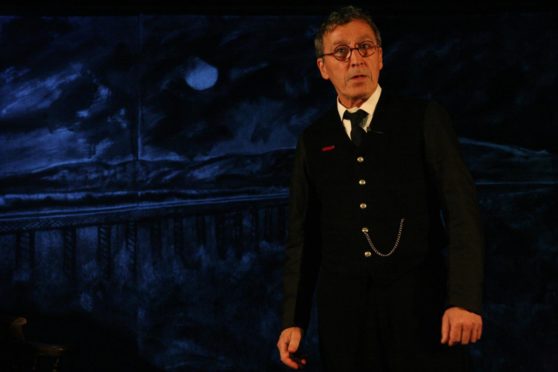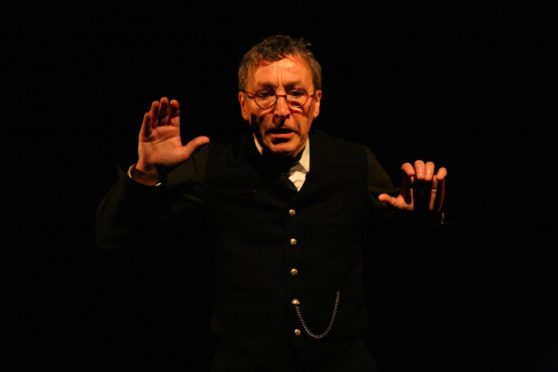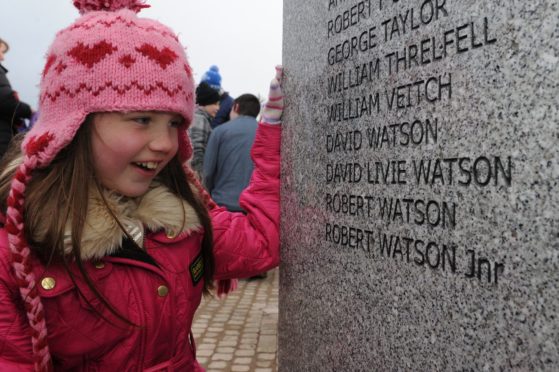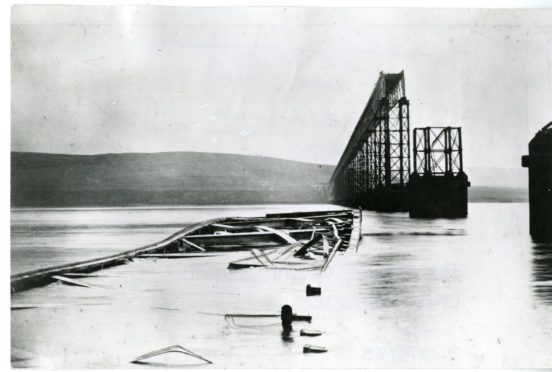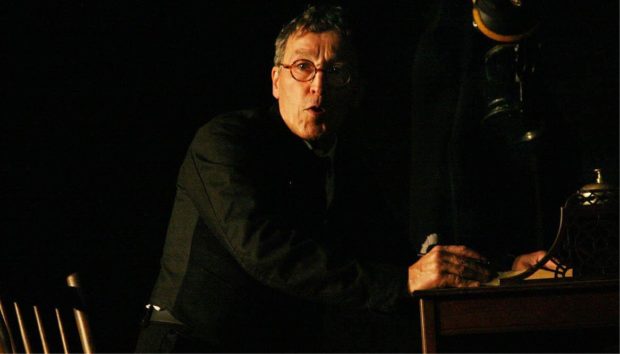Matters of life and death may have become matter of course for audiences in the past 18 months, but for its reopening production, Perth Theatre is presenting one man’s story of a tragedy which took place long before Covid.
“I bet they think, ‘Oh my God, we’re going to open with a disaster?!’” jokes playwright Peter Arnott wryly.
But of course, as he well knows, the Tay Rail Bridge disaster of 1879 is no laughing matter.
When a train from Burntisland to Edinburgh left the tracks of the original Tay Rail Bridge and fell into the river on December 28 1879, it killed at least 59 people.
The signalman in the tower, Thomas Barclay, didn’t see the accident; he was looking away at the time.
This mysterious and haunting tale is the basis of The Signalman – Peter’s award-winning one-man play, which after runs in Glasgow and Edinburgh, has come “home” to Perth Theatre this week.
Tay Bridge signalman’s story brought home
“I live in Perth,” says director Ken Alexander with a flush of pride. “And actually, Perth Theatre is where I trained as a director, so it’s really exciting to be reopening it with this show.
“We’re hoping that the local history aspect of the play will be really interesting to audiences.”
“I live in Perth too, just around the corner, so yes it’s lovely!” chimes in star Tom McGovern, who plays signalman Thomas.
“I don’t live here,” adds Peter, “but it’s good to be alive anyway!”
They make a lively trio, and the palpable passion for the play among them makes for a promising production. And particularly for actor Tom, this play holds personal significance.
“It’s something very dear to me, as Peter knows,” he explains.
“One of my first jobs in drama school was in Dundee, a very long time ago.
“I knew about the Tay Bridge disaster but it took me by surprise that there didn’t seem to be any memorial or anything. And I thought, ‘Something should be done about this!’”
“Tom was very much this inspiration behind this play,” Peter confirms. “It wasn’t just written for his superb talents, it’s also a play that ultimately comes from him. Because we both looked at the Tay Bridge Disaster and found there were stories that hadn’t been told.
“When Thomas Barclay looked out of his signal box in 1879, he saw sparks on the bridge, and heard nothing from the other end. He didn’t know that anything had happened.
“So part of the inspiration was the idea that these are real people whose lives have been interrupted in a way they weren’t expecting.”
Resonance for audiences 142 years later
The disaster took place more than a century ago, but for audiences in 2021 who are still living with the impacts of the Covid pandemic, the story will surely resonate.
“I think people will find a definite connection between what they’ve been through in the past year and a half and what the story does, as well,” director Ken notes.
“Because parts of the story are about life throwing you a curveball and how you deal with that, and the knock-on effect it has for the rest of your life.”
“Thomas had to live with that (accident) for such a long time, because he was only 24,” explains Tom. “He’s now, in the play, 64. And every day and every night of his life, this moment has shaped him.
“And I’m sure in these last two years, we’ve all had something… we’ve all got a story to tell.”
‘There’s nobody funnier than an ambulance driver’
The Signalman presents such a compelling tale, it would be easy to forget that the play is based on the testimony given by the real signalman, Thomas Barclay, at the inquest into the accident.
How, I wonder, did the trio manage to create something entertaining while being respectful to the memory of the real Thomas Barclay?
“To me, we have somebody here who has lived through that disaster and survived it, and part of their equipment for that survival is humour,” says Peter.
“Set 40 years after, in 1919, it’s got a sufficient distance from the disaster to bring in the humour, which people do use to survive – even if it’s quite grim humour.
“Any profession, whether it’s doctors or soldiers or anyone who deals with something this terribly serious all the time, has got a sense of humour about it. You know?
“There’s nobody funnier than an ambulance driver.”
Living life in 3D again
But for all the grimness and tragedy, there is joy in this production – particularly as it marks the end of Perth Theatre’s Covid-induced closure.
“It’s very thrilling to be back in a rehearsal room, in the sense that suddenly everything’s in three dimensions again!” Peter enthuses. “The whole of life has been Zoom meetings for the last two years and everything’s been in two dimensions.
“But the moment that you have three – the soundtrack is telling one story, Tom is telling another story, the lighting is telling another story, and the audience are in between, making up their own holistic version. And you forget that that’s how it works!”
The soundscape and lighting, provided by composer John Beales and designer becky Minto respectively, are enhancements which have been made especially for the Perth run of the play, thanks to Perth Theatre’s artistic director Lu Kemp’s decision to show it in the main theatre instead of the originally-planned studio theatre.
“We’ve got this extraordinary situation today where we’ve all done it before so we all know how it works, and we can sit down today and just make it that bit more special, hopefully,” says Tom.
But ultimately, as he points out: “It’s just great storytelling, and that’s what brings people to the theatre.”
The Signalman is playing at Perth Theatre from September 23 – October 2 2021.
